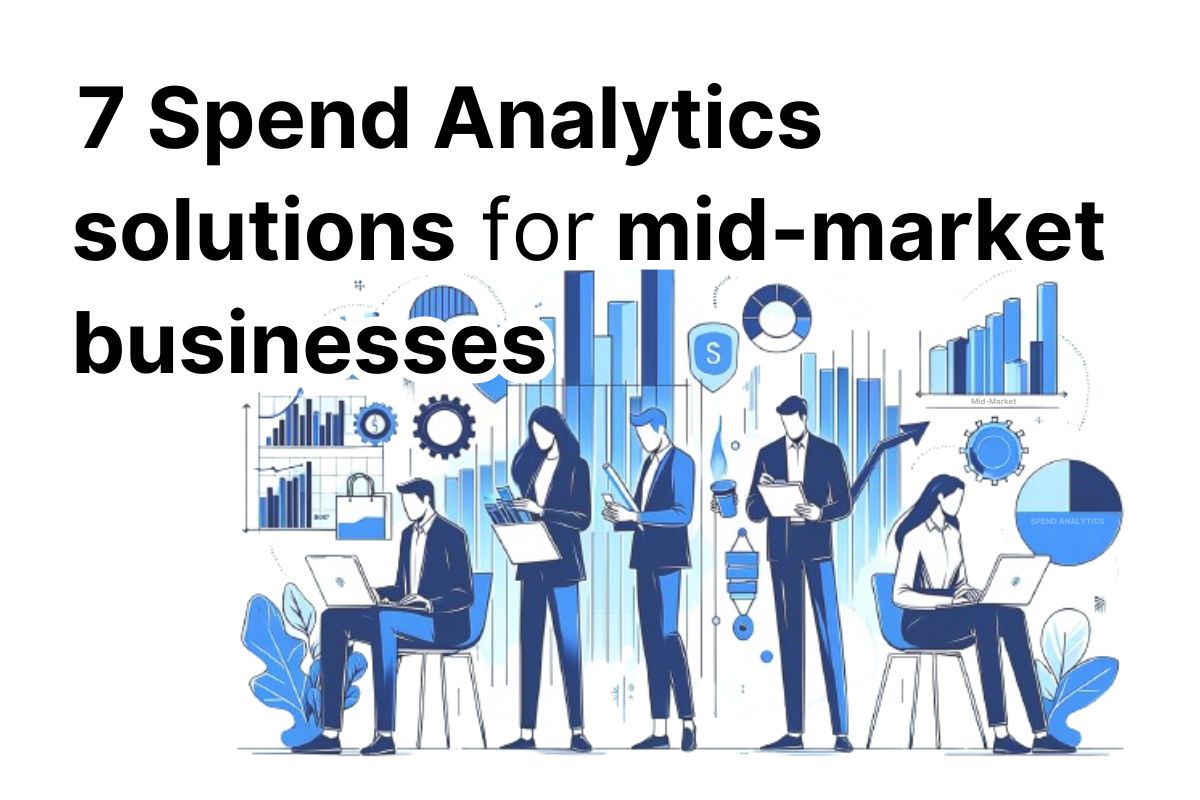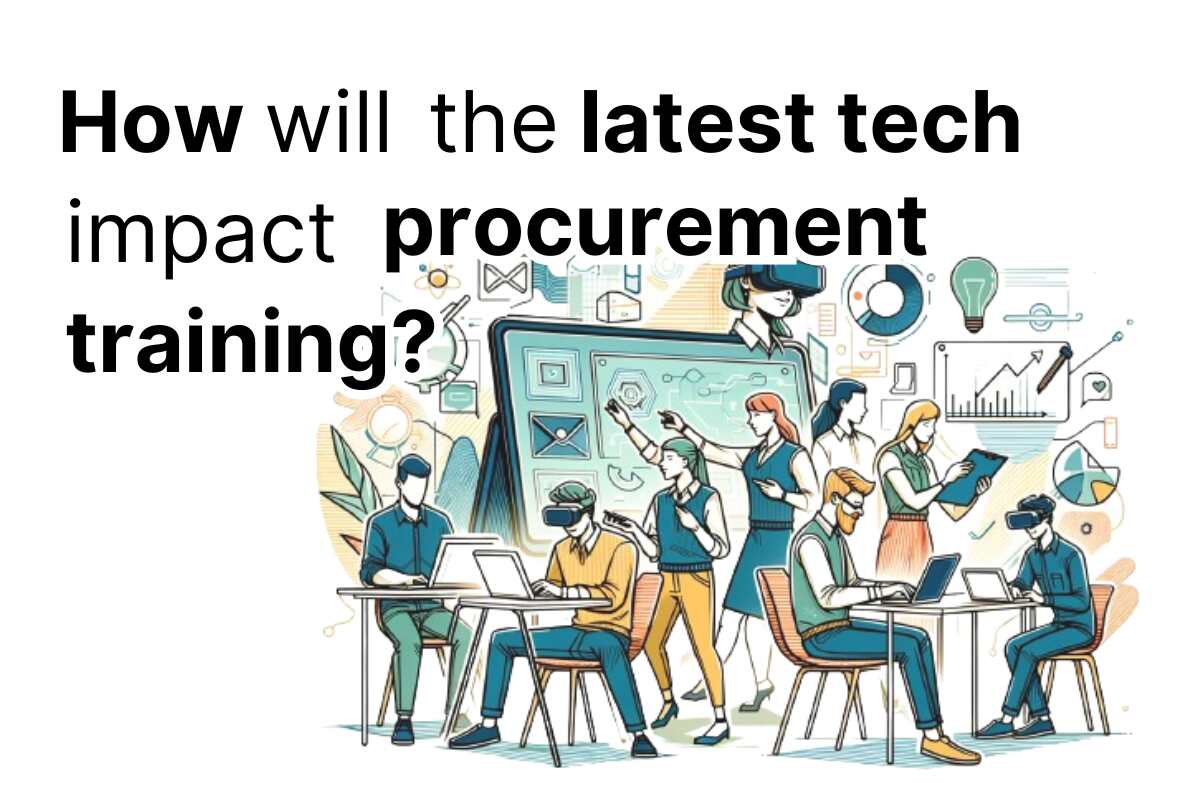Last month, we published our first ever Mid-Market Procurement Tech Map.
I’m still a little surprised and humbled by just how many people shared, liked and commented on the initial post. Clearly, there is a demand for this type of diagram. Even despite the number of “best of” lists and other charts and diagrams already out there.

How did we choose the companies for our Mid-Market Procurement Tech Map?
In an attempt to answer some of the questions and feedback we received, this article will share more detail around how we put this list together.
First things first. If you want to get details on the full taxonomy we use, download a free copy of the tech map in our store. This will also give you the 20 different primary categories we use across our Procurement Software Finder App.
The short summary
The simple answer here is that this Tech Map is not meant to be detailed, academic level research.
If it was, then clearly we would have to charge for this. We would need to hire research analysts, and they’re not cheap. Those expecting this level of research without paying for it will sadly be disappointed!
We’re also not endorsing any software solutions in this Map.
For transparency, we must point out that a few companies on the Tech Map are our partners whom we work with. Some others have been former clients in some form or another.
Neither of these are a prerequisite for including them in the list.
In fact, some of the companies we included are not particularly responsive to our outreach.
It’s not our intention to make this a “best of” or “top 50 or 100 list”. We’ll leave that to others out there who’ve been doing this for years. These lists are often, but not always, built using objective criteria. However, without knowing what each individual reader is seeking specifically from any procurement software provider, I do question how useful they are.
The longer explanation
With that out of the way, let’s explore some of the criteria we looked at when putting this Tech Map for Mid-Market Businesses together.
Pricing: How does a prourement software company price their product?
Perhaps unsurprisingly, most software providers don’t disclose pricing on their websites for their digital procurement tools. The minority do, but most don’t.
It’s therefore difficult to understand who they’re targeting as customers just on pricing alone. In most cases, you need to have a conversation with a salesperson or book a demo to do this.
With over 420 solutions in our database, this would be almost 6 months of work, even if we had 4 conversations each day.
So, how did we evaluate this?
Where there was some transparency on pricing, we have included any solution which offers per user / license based pricing. This typically indicates that software is more in line with the as-a-service (SaaS) model.
A lack of individual customisation options usually suggests a more productised software application. Which in turn usually suggests mid-to-low end of the pricing spectrum.
It’s not an exact science, but it’s a useful indicator.
How does their website copy and menu options appear?
This is quite a difficult one to describe but after looking through over 400 procurement tech websites, I guess I can say that I have a sixth sense.
As a rule of thumb: the more stuffy and formal looking the website, the more likely the solution is enterprise software.
Any website that’s written in “consultant speak” is pretty much immediately excluded. The average Head of Procurement in a non-enterprise setting would not understand or have time to read half of this jargon.
For Business Spend Management (BSM) solutions, it’s easy to tell who their target audience is based on their integrations with accounting, finance and ERP systems. A software targeting SMEs and Mid-Market is usually not going to integrate with SAP and Oracle. However, it probably will offer integration with systems like Sage and NetSuite.
Software companies who have good copywriters and marketing teams will of course nail the copy and the menu items on their website. As a casual browser on their site, it should be blindingly obvious who they’re trying to sell to. But on many websites, it’s actually really hard to tell.
If they call out mid-market as their core sales audience, we have typically included them in the list. If they don’t specifically call this out, we’ve used other indicators above in their copy and website structure as clues.
Is the solution easy and fast to implement?
Now, let me caveat this first. I understand that not all customers are equal. A chaotic, dysfunctional customer can still make a mess of an IT project, even for software that is designed to be simple and easy to implement.
Nonetheless, some procurement tech providers are much easier and faster to implement than others. This is usually down to their ease of use, user interface (UI), fewer and less complex features, and a relative lack of complex customisation options.
Solutions which target mid-market businesses will normally sell this point in their website copy and explainer videos. A short implementation is a major advantage over some of the legacy, enterprise suites which take several months to implement.
If this is missing from their marketing material, it’s often a telltale sign that they’re targeting large, corporate customers.
How user-friendly is the digital procurement solution?
The same can be said for user-friendliness. Software companies with an intuitive UI and a modern and smooth UX will be shouting this from the rooftops.
Screenshots of their application, on-demand demos and explainer videos, as well as a slick, beautifully designed website are typical signs that a software company is targeting users beyond large enterprises.
Anyone who is managing a stretched, lean team in a less mature procurement organisation will see user experience as a non-negotiable.
Nobody in these teams has got the time nor the resources to allocate and train an army of “super users” due to software complexity.
Who are their reference customers?
Any procuretechs who have reference case studies of successful customer implementations will give us a good indication of their target market.
There are some awesome websites out there with customer case studies which make my job easy. Others don’t disclose the customer, or worse still, don’t contain any reference customers. This, of course, makes it harder, and forces us to rely more on the website copy, its look and its feel.
Who are their implementation partners?
Generally speaking, any procurement tech company who requires a traditional consulting firm to be their implementation partner is selling software designed for enterprise customers.
You should not need a complex consulting project and external experts to implement modern procurement software for the mid-market. The time to ROI and the speed of implementation will almost certainly mean that your solution is not a fit for this market segment.
Budgets are tighter in the mid-market and the end customer demands a lean implementation.
Explanation of how we categorised S2P, P2P and S2C
You will notice that some companies appear in more than one category, whereas most are only listed once. We took this decision because for BSM tools specifically, many tools are suite applications. This means they don’t necessarily have one primary feature, rather they offer a suite of interconnected modules.
On the Procurement Software Directory we’ve given them all the BSM category as their Primary Category. We then tagged them with all different modules and functionalities that they have e.g. P2P, S2C, S2P, e-Procurement, AP automation etc.
For a Tech Map, this would have made one section too big and chaotic to display visually. To compound things, many see certain functionalities as synonymous, even though they’re not.
We therefore took the decision to include Procure-to-Pay, Source-to-Pay and Source-to-Contract separately. This way, you can easily see which solutions do what.
The same logic for Accounts Payable Automation
We used a similar thought process for AP automation.
Some software solutions which primarily target the Finance community are exclusively AP automation tools. However, many BSM applications also have a module offering this as a feature, along with more typical procurement technology modules.
Someone looking for software that’s focused on either sourcing or tactical P2P can therefore see at a glance which are suites, versus which are best-of-breed solutions.
We would nonetheless recommend that for BSM you should check out our Software Finder to be able to perform a more detailed search. This is a complex market with many providers.
This is just a superficial overview
Are you still confused? It’s not surprising. The market is constantly evolving and becoming more complex as these categories mature and grow.
It’s difficult to pigeon hole different procurement software applications into a box on an A1-sized poster.
Introducing our RFI-as-a-Service
This is perhaps why you could benefit from a white glove service. We also offer a customised RFI-as-a-Service, catered to your individual requirements and criteria.
- You tell us what you want the software to do.
- We give you some initial feedback around whether that’s possible in one solution.
- Then, we refine the scope of work and must-haves vs. nice-to-haves.
- Once you give us the green light, we go out and filter all of the software that theoretically offers all or most of these features.
- We then give you the shortlist of the most relevant solutions, and perform a deep dive (demos, sales meetings, Q&A) on each of these.
- We provide the relative strengths and weaknesses of these applications in a report, along with the suggested next steps.
All of this can be provided for a fixed cost. No time-and-materials billable hours.
Once the scope is clear, we’ll deliver an RFI-as-a-Service at a fixed cost. Typically, this costs between $4,000 to $5,000.
Book an Intro Call
Time is money, and this will get you to the point of choosing a provider 2-3 months faster.
No Googling, no wasting your time talking to salespeople from software providers who don’t meet your requirements.
Every week saved in sourcing and selecting a provider is a week you’re delivering value to your stakeholders and organisation through digitising your key procurement processes and activities.
Let us take you to your destination faster and more efficiently!



